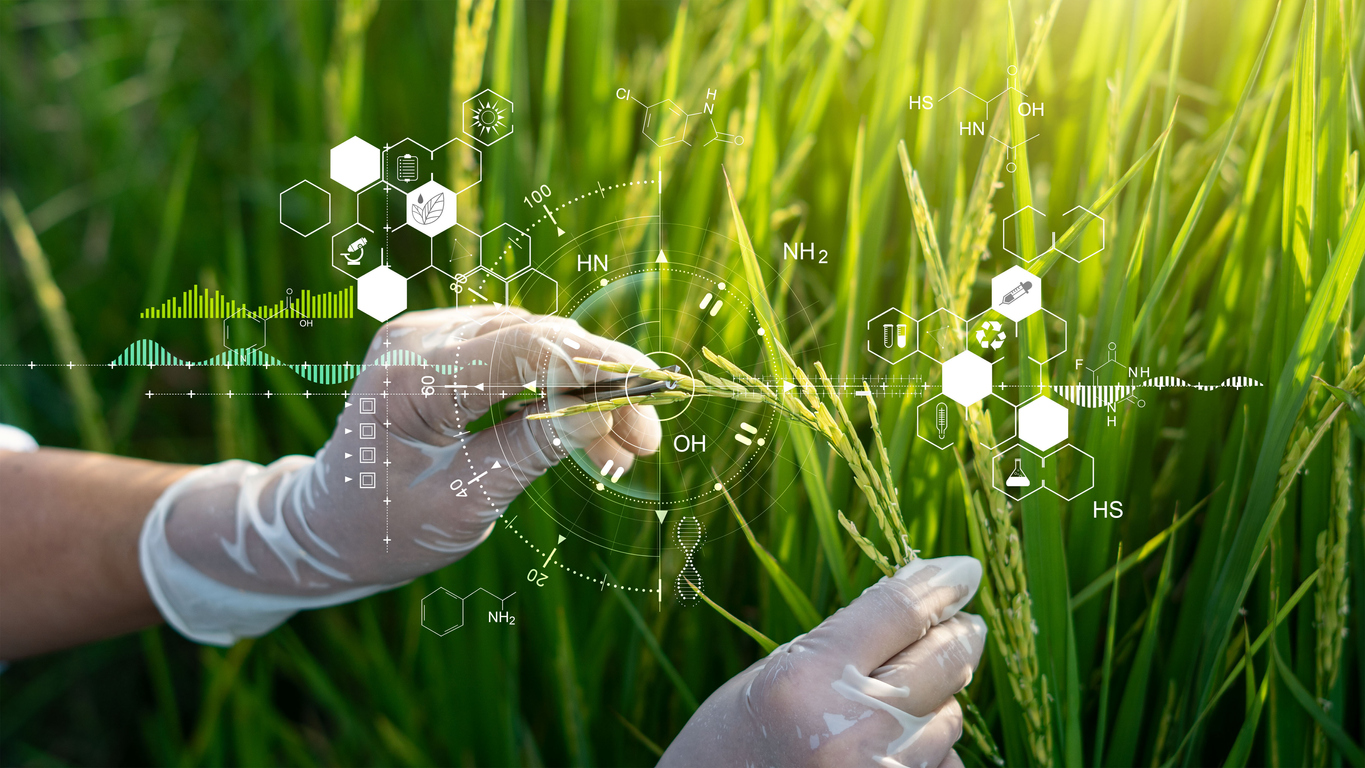Vegetation and Reproductive Plant Growth
As summer winds down, gardeners and farmers are harvesting their crops. The dry weather has reduced yields but crops have a higher sugar content due to the concentration of plant sugars from less water. Drought has had a negative effect on both vegetative and reproductive growth. There are certain nutrients which promote mainly vegetative growth and others that promote reproductive growth. A basic understanding of these nutrient relationships can help homeowners, gardeners, and farmers maximize their harvest.
Plants utilize nitrates (NO3 - ), potassium (K + ) and chloride (Cl - ) to promote vegetative growth. The plant growth hormone auxin is stimulated by these nutrients and is produced in the growing tips of plants and regulates cell growth and promotes cell elongation. Overfertilizing with these nutrients can lead to excess vegetative growth but no reproductive growth with no flowers or fruit. For example, to much nitrate in tomatoes cause lots of vegetative growth, but no or few tomatoes. Farmers fertilize alfalfa hay with potassium to promote vegetative growth for more hay production. When potassium levels get to high, soybeans may get very tall but with wide internodes and few pods, soybean yields can be reduced. Chloride stimulates plant growth but is also a major salt that kills beneficial soil microbes. Plants need a balance of essential nutrients to optimize yields and crop production.
Plants utilize ammonium (NH4 + ), phosphorus (P) and manganese (Mn 2+) to promote reproductive growth. The plant hormone cytokinin is stimulated by these nutrients and is produced in the root tips of plants. Cytokinin stimulates cell growth, stimulates more buds on plants to increase yield, delays leaf senescence (leaf yellowing, leaf death) and also reduces certain bacteria diseases. Farmers should use a combination of nitrates at corn planting to promote vegetative growth with ammonium forms at side-dressing to promote reproductive growth. On potatoes, phosphorus greatly enhances yield. In a garden, a local farmer harvested 100# potatoes with no dairy compost, and 1000# potatoes where he used dairy compost scrapped off the cow lot highly enriched with phosphorus. Manganese is critical for high yielding crops and is often limiting. Manganese is used by plants to split the water molecule to produce carbohydrates and proteins. I sprayed manganese sulfate on my tomato plants and within hours the plant leaves turned dark green, resulting in higher photosynthesis and nice tomatoes. All other essential nutrients are also needed to optimize crop harvest.
Calcium (Ca 2+ ) is a unique essential element, critical for promoting vegetative growth (cell elongation) and reproductive growth (increases bud formation). Calcium promotes shorter internodes in soybeans with more buds and pods, leading to higher soybean yields. Farmers often apply lime (calcium carbonate) to correct pH but to also as a source of plant calcium. Gypsum (calcium sulphate) can also supply calcium and sulfur. Ohio State University research on gypsum has seen variable results. Gypsum was applied at 0 to 10 tons in the fall on corn and soybeans plots with little or no yield increases. Why? Gypsum is highly soluble and easily tied up by the soil. It’s like being in the middle of the ocean, water, water everywhere but none fit to drink. Plants have a tremendous or exponential need for calcium at pollination, so applying a small amount (200-300#) broadcast at the right time (30-40 days) before pollination gives the best results because the calcium becomes plant available when plant calcium demand is high.
There is a battle in plants between nutrients that promote vegetative growth with auxins and reproductive growth with cytokinin. As auxin plant levels go up, cytokinin levels decrease and vice versa. Plant growth and reproduction is a balancing act and we need both processes at the same time to optimize yields. Calcium is an essential nutrient in 146 plant hormones and regulates both processes. Homeowners, gardeners, and farmers can utilize this information to promote better plant vegetative and reproductive growth to optimize yields.
Separately, new research shows that plant roots are acting like venous fly catcher’s; trapping and consuming bacteria in plant root tips. In this “rhizophagy” process, bacteria lose their cell wall rigidity and are absorbed by the root tips, bringing in essential micronutrients and organic compounds that promote plant growth. Some bacteria cells are consumed, others are released into the soil, reforming their cell walls but energized with plants sugars to repopulate the soil. Plants are farming certain microbes just like humans grow and feed livestock for food. Exploring Mother Nature is a strange and wonderful thing!
